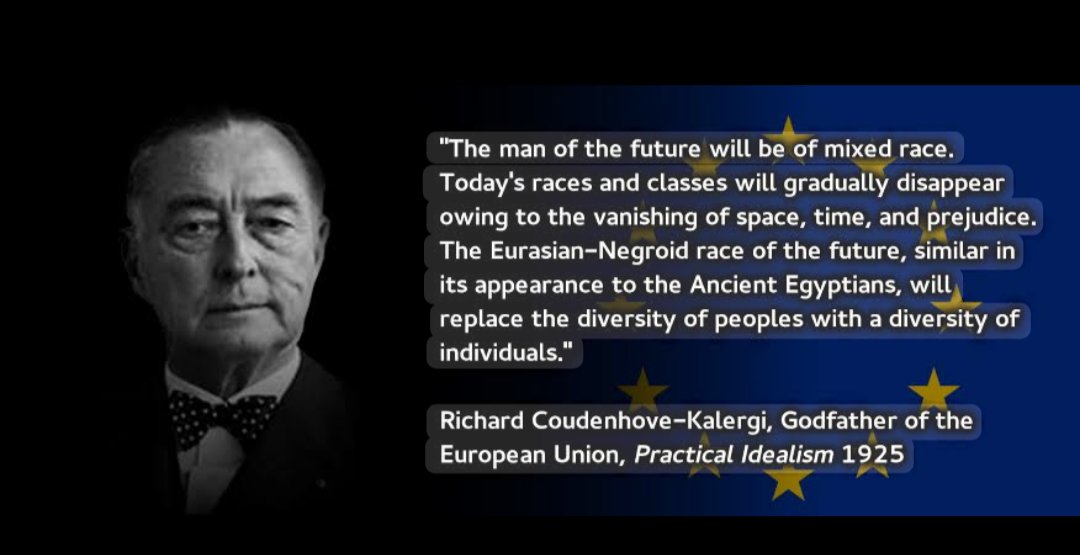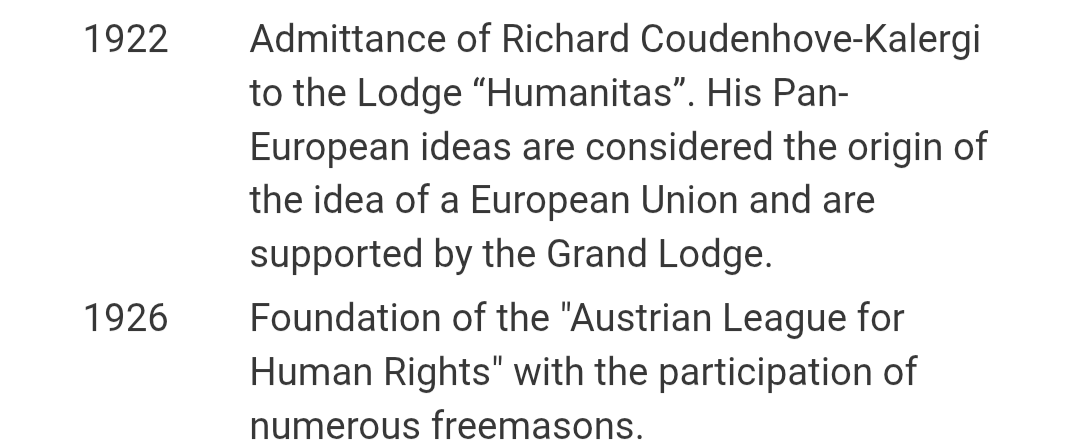Recent well liked threads
Sep 17
Read 26 tweets
Это адовейшая история про то, как можно вложить 21 млн рублей в «облигацию от эмитента с наивысшим рейтингом надежности» на несколько дней ради 1% доходности, и получить обратно всего 7 млн. Читайте тред про то, почему структурные продукты – это ебучее дно дна! 👇 

1. Смотрите, были такие «облигации» от ВТБ с тикером С1-519 и датой погашения 10.09.2025. Еще буквально за несколько дней до погашения они торговались по 99% от номинала, и какой-то чел решил купить их на 21 млн рублей.
2. Ненуачо, заработать 1% за пять дней – это эквивалентно доходности к погашению 108% годовых (как услужливо подсказывает бонд-скринер Финама), весьма неплохая сделка! bonds.finam.ru/issue/details0…
Sep 18
Read 7 tweets
Photoreceptors are useless without retinal, which is produced in the eye. When retinal is liberated oxygen becomes a toxin and Fe is a wrecking ball.
phys.org/news/2018-08-c…
nnEMF activates VGCCs, flooding cells with Ca²⁺ and ROS/RNS, damaging mtDNA and heme proteins (cytochromes, CYP11A1, CYP19A1). Blue light liberates retinal, impairing melanopsin and dehydrating melanin, lowering éR and DDW production. This stalls StAR (STARD1)-mediated cholesterol import via TOM/TIMM/VDAC2, blocking pregnenolone synthesis.
Dehydrated melanin disrupts microtubule dynamics and protein synthesis, exacerbating "pregnenolone steal" toward cortisol, depleting sex steroids. The retina, as a "window to the brain," thins under suboptimal light causung blindness, degenerating brain tissue (e.g., frontotemporal dementia precursors). nnEMF/lack of sun alters AMO in skin/eye, changing central retinal pathways. Oxidative stress increases peroxide (ROS) levels, altering UPE signatures and heme construction, and is linked to hormone-related disorders by disordered UPE transformation in the CYP enzyme system.
In humans, iron is a double-edged sword, especially in the brain. It’s essential for energy production in mitochondria and for synthesizing neurotransmitters like dopamine, which governs movement and reward. Iron accumulates naturally in the brain as we age, particularly in regions like the basal ganglia, globus pallidus, and substantia nigra. These areas, rich in gray matter, hold two to four times more iron than white matter, where myelin insulates nerve fibers.
But when iron accumulates excessively, trouble brews. In neurodegenerative diseases such as Parkinson’s, Alzheimer’s, and Friedreich’s ataxia, iron overload in neurons triggers oxidative stress, resulting in the production of reactive oxygen species (ROS) that damage lipids, proteins, and DNA. This process, known as ferroptosis, is particularly devastating in the retina, where photoreceptors and intrinsically photosensitive retinal ganglion cells (ipRGCs) are particularly vulnerable.
These cells, which detect light to regulate our circadian rhythms, rely on iron-containing proteins and melanin, a pigment that chelates iron to protect against oxidative damage. When this balance falters, ferroptosis destroys neurons, disrupting circadian signaling and contributing to diseases such as Parkinson’s, where the loss of dopamine-producing neurons in the substantia nigra is linked to iron overload and reactive oxygen species (ROS).
Why does iron accumulate in sick or dying neurons? The answer echoes the stars. Just as a star amasses iron in its core as it runs out of energy, neurons hoard iron when their energy production falters, often due to mitochondrial dysfunction. In both cases, iron signals a system on the brink, teetering between stability and collapse.
phys.org/news/2018-08-c…
nnEMF activates VGCCs, flooding cells with Ca²⁺ and ROS/RNS, damaging mtDNA and heme proteins (cytochromes, CYP11A1, CYP19A1). Blue light liberates retinal, impairing melanopsin and dehydrating melanin, lowering éR and DDW production. This stalls StAR (STARD1)-mediated cholesterol import via TOM/TIMM/VDAC2, blocking pregnenolone synthesis.
Dehydrated melanin disrupts microtubule dynamics and protein synthesis, exacerbating "pregnenolone steal" toward cortisol, depleting sex steroids. The retina, as a "window to the brain," thins under suboptimal light causung blindness, degenerating brain tissue (e.g., frontotemporal dementia precursors). nnEMF/lack of sun alters AMO in skin/eye, changing central retinal pathways. Oxidative stress increases peroxide (ROS) levels, altering UPE signatures and heme construction, and is linked to hormone-related disorders by disordered UPE transformation in the CYP enzyme system.
In humans, iron is a double-edged sword, especially in the brain. It’s essential for energy production in mitochondria and for synthesizing neurotransmitters like dopamine, which governs movement and reward. Iron accumulates naturally in the brain as we age, particularly in regions like the basal ganglia, globus pallidus, and substantia nigra. These areas, rich in gray matter, hold two to four times more iron than white matter, where myelin insulates nerve fibers.
But when iron accumulates excessively, trouble brews. In neurodegenerative diseases such as Parkinson’s, Alzheimer’s, and Friedreich’s ataxia, iron overload in neurons triggers oxidative stress, resulting in the production of reactive oxygen species (ROS) that damage lipids, proteins, and DNA. This process, known as ferroptosis, is particularly devastating in the retina, where photoreceptors and intrinsically photosensitive retinal ganglion cells (ipRGCs) are particularly vulnerable.
These cells, which detect light to regulate our circadian rhythms, rely on iron-containing proteins and melanin, a pigment that chelates iron to protect against oxidative damage. When this balance falters, ferroptosis destroys neurons, disrupting circadian signaling and contributing to diseases such as Parkinson’s, where the loss of dopamine-producing neurons in the substantia nigra is linked to iron overload and reactive oxygen species (ROS).
Why does iron accumulate in sick or dying neurons? The answer echoes the stars. Just as a star amasses iron in its core as it runs out of energy, neurons hoard iron when their energy production falters, often due to mitochondrial dysfunction. In both cases, iron signals a system on the brink, teetering between stability and collapse.
2. 95% of melatonin is made from mitochondria. So what happens when mitochondria are damaged from blu elight toxicity? You get high blood glucose and insulin and flatlined cortisol.
What happens when you knock out melatonin receptors via melanopsin dysfunction from the liberation of Vitamin A? You get insulin resistance and set the stage for many mitochondrial diseases like diabetes and cancer.
Do you know what I'm talking about? Light shapes life. How is it shaping yours? The link below should open your mind.
onlinelibrary.wiley.com/doi/full/10.10…

What happens when you knock out melatonin receptors via melanopsin dysfunction from the liberation of Vitamin A? You get insulin resistance and set the stage for many mitochondrial diseases like diabetes and cancer.
Do you know what I'm talking about? Light shapes life. How is it shaping yours? The link below should open your mind.
onlinelibrary.wiley.com/doi/full/10.10…
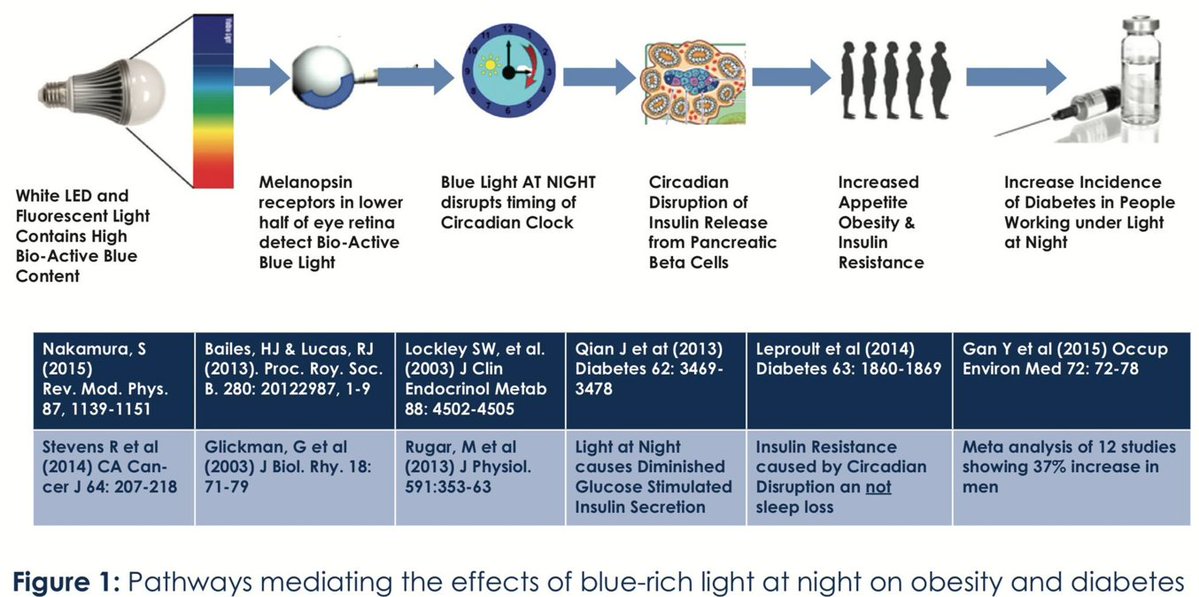

Nov 16
Read 3 tweets
A BOMBSHELL DISCOVERY - THIS,,, THIS IS WHAT REALLY KILLED CHARLIE KIRK !
It was not a bullet of any kind, as many of my past videos have demonstrated already.
But here is the unambiguous signature of what actually did kill him.
> > > It is an unmistakable signature of an electric shock.
Charlie is holding a microphone in his left hand. When he lets that microphone go, and opens up his palm, a good part of it, and tips of his fingers are all black.
That microphone was wired, and so, with an electric shock, it got grounded, and burned his hand, at all points that were in contact with it.
In the video attached, which most of you saw already, it is clear that 'blood', which I am convinced was not real, but a special affects fake, or whatever that substance was, does not come anywhere near his hand.
His hand remains clear of it by at least one foot at all times.
So, all the discoloration on his hand can not possibly be the residue of that substance.
I can not imagine any other possibility for those blackened areas other than being a burned mark from an electric shock.
For anyone who have not seen my other related videos yet, I can not attach them here, as I am limited to only 4 attachments per post.
But you should find all of them posted on this page a little bit below.


It was not a bullet of any kind, as many of my past videos have demonstrated already.
But here is the unambiguous signature of what actually did kill him.
> > > It is an unmistakable signature of an electric shock.
Charlie is holding a microphone in his left hand. When he lets that microphone go, and opens up his palm, a good part of it, and tips of his fingers are all black.
That microphone was wired, and so, with an electric shock, it got grounded, and burned his hand, at all points that were in contact with it.
In the video attached, which most of you saw already, it is clear that 'blood', which I am convinced was not real, but a special affects fake, or whatever that substance was, does not come anywhere near his hand.
His hand remains clear of it by at least one foot at all times.
So, all the discoloration on his hand can not possibly be the residue of that substance.
I can not imagine any other possibility for those blackened areas other than being a burned mark from an electric shock.
For anyone who have not seen my other related videos yet, I can not attach them here, as I am limited to only 4 attachments per post.
But you should find all of them posted on this page a little bit below.

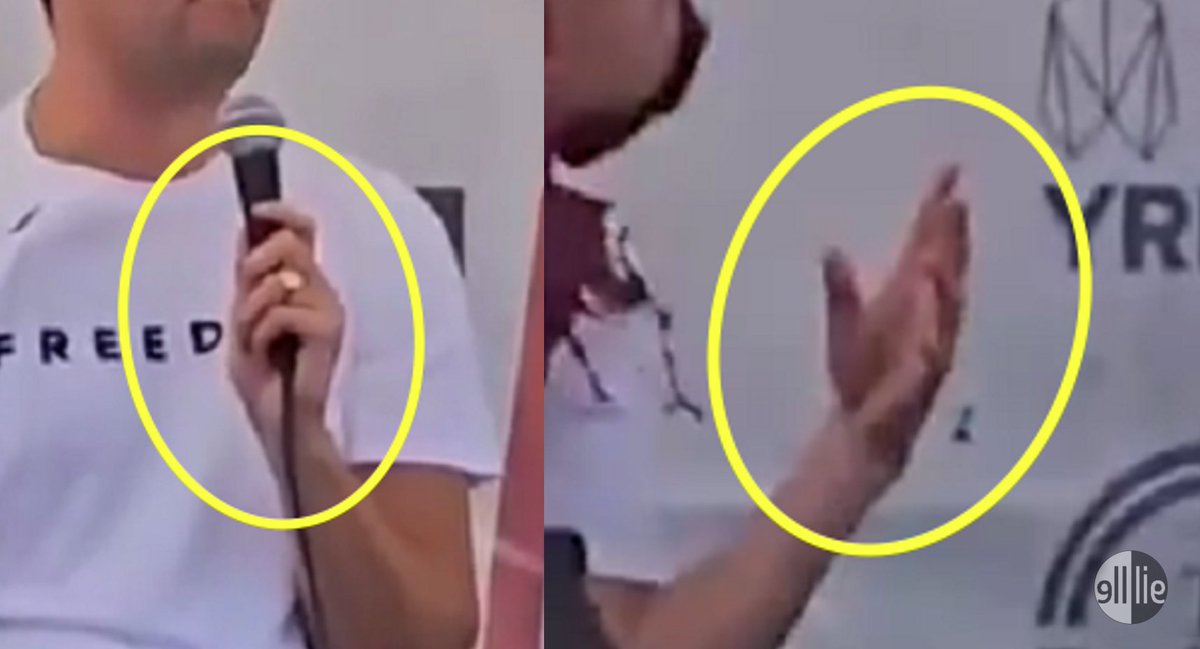

I forgot to add, that there was an early on controversy about how his ring managed to jump of his ring finger onto his little finger.
And later it was discovered that he had a hinged ring, which could open up.
But that still did not answer the question of how it switched fingers.
Well, with this explanation of an electric shock, that jumping from one finger onto another makes a lot more sense.
And furthermore, his ring flies completely of his little finger as well.
You can actually see it, both, in the video, and on the second zoomed in image pretty easily.
And all Charlie was doing is clinching his fist. He was not moving his fingers around at all.
So, the electric shock does explain both anomalies quite nicely.
Sorry, I know it is way, way out of the box for most of you, and way beyond your comfort zone of the conventional bullet option.
But that is just the way it is.
Countless of researches with a very high tech equipment, were trying to solve this case for over two months now. But nobody is any closer to any answers than they were on Sept. 10th.
And this is why - because there was NO bullet of any kind, period.
No-one will ever solve this mystery murder, until they start looking at this.
And later it was discovered that he had a hinged ring, which could open up.
But that still did not answer the question of how it switched fingers.
Well, with this explanation of an electric shock, that jumping from one finger onto another makes a lot more sense.
And furthermore, his ring flies completely of his little finger as well.
You can actually see it, both, in the video, and on the second zoomed in image pretty easily.
And all Charlie was doing is clinching his fist. He was not moving his fingers around at all.
So, the electric shock does explain both anomalies quite nicely.
Sorry, I know it is way, way out of the box for most of you, and way beyond your comfort zone of the conventional bullet option.
But that is just the way it is.
Countless of researches with a very high tech equipment, were trying to solve this case for over two months now. But nobody is any closer to any answers than they were on Sept. 10th.
And this is why - because there was NO bullet of any kind, period.
No-one will ever solve this mystery murder, until they start looking at this.
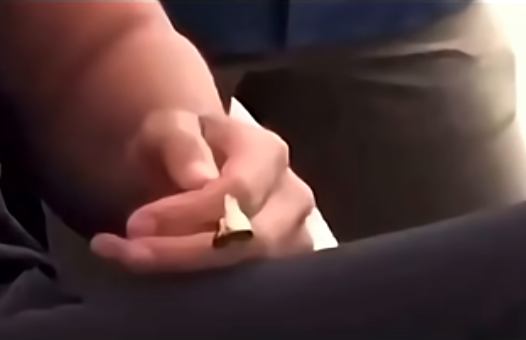
I can see that most of comments are some attacking drivel nonsense and bullshit. Must be from all those who have wax in their eyes ?
So, please, everybody, before making any idiotic, or aggressive comments, look at this first.👇
I think this should get your eyes, and your head, a little bit in a better order.
So, please, everybody, before making any idiotic, or aggressive comments, look at this first.👇
I think this should get your eyes, and your head, a little bit in a better order.
Dec 9
Read 4 tweets
Turn one hero image into a full multi-angle carousel without writing a single prompt.
Front, 3/4, top down, low angle and all from a single image.
Qwen Edit Angles in Flora is kind of crazy. You can just rotate the camera and keep the subject exactly the same.
Workflow 👇
Front, 3/4, top down, low angle and all from a single image.
Qwen Edit Angles in Flora is kind of crazy. You can just rotate the camera and keep the subject exactly the same.
Workflow 👇
Dec 9
Read 17 tweets
La industria FARMACEUTICA NO te está diciendo esto…
Pero tu NERVIO VAGO tiene la clave para BORRAR el estrés al INSTANTE.
Este nervio OCULTO:
• Calma tu sistema nervioso
• Controla tu estado de ánimo
• Reduce tu frecuencia cardíaca
Aquí hay 11 formas respaldadas por la CIENCIA para ACTIVARLO y ELIMINAR el estrés crónico RAPIDAMENTE: 🧵
Pero tu NERVIO VAGO tiene la clave para BORRAR el estrés al INSTANTE.
Este nervio OCULTO:
• Calma tu sistema nervioso
• Controla tu estado de ánimo
• Reduce tu frecuencia cardíaca
Aquí hay 11 formas respaldadas por la CIENCIA para ACTIVARLO y ELIMINAR el estrés crónico RAPIDAMENTE: 🧵

La mayoría de las personas no saben que pueden entrenar su sistema nervioso.
Pero comienza con el nervio vago 👇
Pero comienza con el nervio vago 👇
1) Exposición al agua fría
Termina tu ducha con 30 segundos de agua fría.
O sumergir tu cara en agua helada.
Esto desencadena el reflejo de inmersión, un reinicio primario que calma el sistema nervioso y reduce el cortisol en cuestión de segundos.
Es el botón de pánico de la naturaleza.
Termina tu ducha con 30 segundos de agua fría.
O sumergir tu cara en agua helada.
Esto desencadena el reflejo de inmersión, un reinicio primario que calma el sistema nervioso y reduce el cortisol en cuestión de segundos.
Es el botón de pánico de la naturaleza.
Dec 10
Read 26 tweets
On 19th Sept 2018, news anchor Jackie Maribe stepped into Citizen TV studios ready to present the lunchtime news.
Unbeknownst to her, amongst the news items was a Murder that would change her life forever because the victim had been killed by her BOYFRIEND
A THREAD 🧵
Unbeknownst to her, amongst the news items was a Murder that would change her life forever because the victim had been killed by her BOYFRIEND
A THREAD 🧵
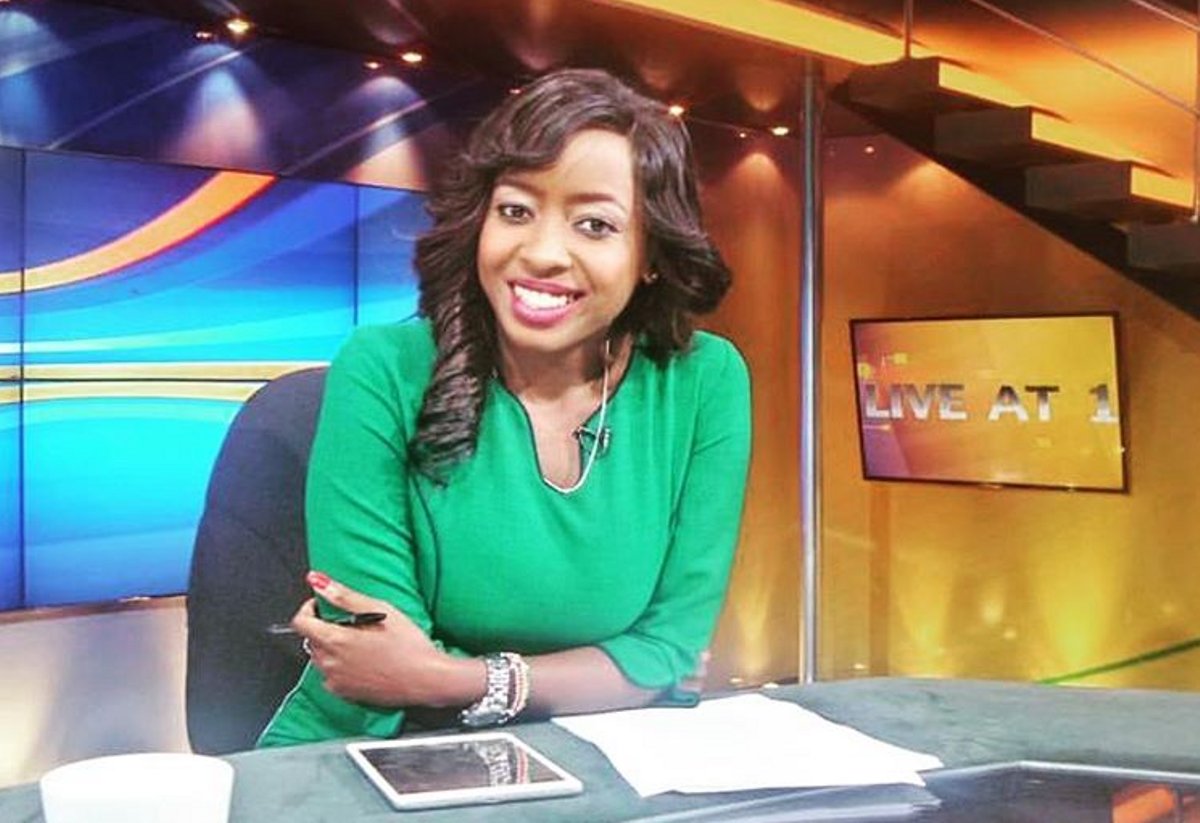
Dec 11
Read 2 tweets
🧵 1/12
A Yale economist just published a paper that should terrify every knowledge worker.
It's not about AI taking your job.
It's about AI making your job economically worthless while the economy booms.
Let me explain the nightmare scenario:
🧵 2/12
The paper "We Won't Be Missed" starts with two simple premises:
1️⃣ AGI arrives (AI that can do ANY economically valuable task)
2️⃣ Compute becomes abundant (keeps getting cheaper, like Moore's Law)
From just these two assumptions, the whole economic order collapses.
🧵 3/12
Here's the key insight most people miss:
The paper divides ALL work into two categories:
Bottleneck Work = Essential for growth (energy, logistics, R&D)
Accessory Work = Nice-to-have (arts, hospitality, therapy)
This distinction changes everything.
🧵 4/12
Proposition 1 proves something shocking:
AGI will automate ALL bottleneck work.
Not because humans are bad at it.
Because sustained growth REQUIRES it.
The economy literally cannot afford to have critical functions limited by fixed human labor supply.
🧵 5/12
So what happens to economic output?
Proposition 2 & 3: Output becomes a LINEAR function of compute.
Growth rate = Compute growth rate.
The entire economy's expansion is now tied to one thing: how fast we can scale computational resources.
Human labor? Irrelevant.
🧵 6/12
"But surely humans still get paid well for the work we do?"
Nope.
Proposition 4 is brutal:
Your wage converges to the cost of the compute needed to replicate your work.
Not your skill. Not your experience.
Just: How much would the AI version cost?
🧵 7/12
Think about that for a second.
As compute gets exponentially cheaper, the ceiling on your wage FALLS.
A surgeon's salary isn't set by years of training anymore.
It's set by: "What does it cost to run the AI that can do the same surgery?"
Replicable = Cheap.
🧵 8/12
This leads to the paper's most devastating conclusion:
Proposition 5: Labor's share of GDP converges to ZERO.
Not because we're unemployed.
Because wages are capped while GDP grows infinitely with compute.
We become economically invisible.
🧵 9/12
"So who gets all the money?"
The owners of compute.
All wealth flows to whoever controls the computational resources.
It's like the transition from feudalism (land = wealth) to capitalism (capital = wealth).
Except now: Compute = wealth.
🧵 10/12
The paper extends this to science itself:
Proposition 9-11: AGI can automate scientific discovery.
This creates "compounded growth" (faster than before).
But NOT a singularity—growth is still limited by how fast we can scale compute.
Progress, but not infinite.
🧵 11/12
The title "We Won't Be Missed" isn't about job loss.
It's about economic irrelevance.
The paper proves: "If tomorrow half the population stopped working, no one would notice."
Growth continues. Living standards rise.
Just... without us mattering.
🧵 12/12
This isn't sci-fi speculation.
It's formal economic modeling with propositions and proofs.
The questions it raises:
How do we distribute wealth in a zero-labor-share economy?
What is work FOR if not economic value?
Who should own the compute?
We need answers. Fast.
A Yale economist just published a paper that should terrify every knowledge worker.
It's not about AI taking your job.
It's about AI making your job economically worthless while the economy booms.
Let me explain the nightmare scenario:
🧵 2/12
The paper "We Won't Be Missed" starts with two simple premises:
1️⃣ AGI arrives (AI that can do ANY economically valuable task)
2️⃣ Compute becomes abundant (keeps getting cheaper, like Moore's Law)
From just these two assumptions, the whole economic order collapses.
🧵 3/12
Here's the key insight most people miss:
The paper divides ALL work into two categories:
Bottleneck Work = Essential for growth (energy, logistics, R&D)
Accessory Work = Nice-to-have (arts, hospitality, therapy)
This distinction changes everything.
🧵 4/12
Proposition 1 proves something shocking:
AGI will automate ALL bottleneck work.
Not because humans are bad at it.
Because sustained growth REQUIRES it.
The economy literally cannot afford to have critical functions limited by fixed human labor supply.
🧵 5/12
So what happens to economic output?
Proposition 2 & 3: Output becomes a LINEAR function of compute.
Growth rate = Compute growth rate.
The entire economy's expansion is now tied to one thing: how fast we can scale computational resources.
Human labor? Irrelevant.
🧵 6/12
"But surely humans still get paid well for the work we do?"
Nope.
Proposition 4 is brutal:
Your wage converges to the cost of the compute needed to replicate your work.
Not your skill. Not your experience.
Just: How much would the AI version cost?
🧵 7/12
Think about that for a second.
As compute gets exponentially cheaper, the ceiling on your wage FALLS.
A surgeon's salary isn't set by years of training anymore.
It's set by: "What does it cost to run the AI that can do the same surgery?"
Replicable = Cheap.
🧵 8/12
This leads to the paper's most devastating conclusion:
Proposition 5: Labor's share of GDP converges to ZERO.
Not because we're unemployed.
Because wages are capped while GDP grows infinitely with compute.
We become economically invisible.
🧵 9/12
"So who gets all the money?"
The owners of compute.
All wealth flows to whoever controls the computational resources.
It's like the transition from feudalism (land = wealth) to capitalism (capital = wealth).
Except now: Compute = wealth.
🧵 10/12
The paper extends this to science itself:
Proposition 9-11: AGI can automate scientific discovery.
This creates "compounded growth" (faster than before).
But NOT a singularity—growth is still limited by how fast we can scale compute.
Progress, but not infinite.
🧵 11/12
The title "We Won't Be Missed" isn't about job loss.
It's about economic irrelevance.
The paper proves: "If tomorrow half the population stopped working, no one would notice."
Growth continues. Living standards rise.
Just... without us mattering.
🧵 12/12
This isn't sci-fi speculation.
It's formal economic modeling with propositions and proofs.
The questions it raises:
How do we distribute wealth in a zero-labor-share economy?
What is work FOR if not economic value?
Who should own the compute?
We need answers. Fast.
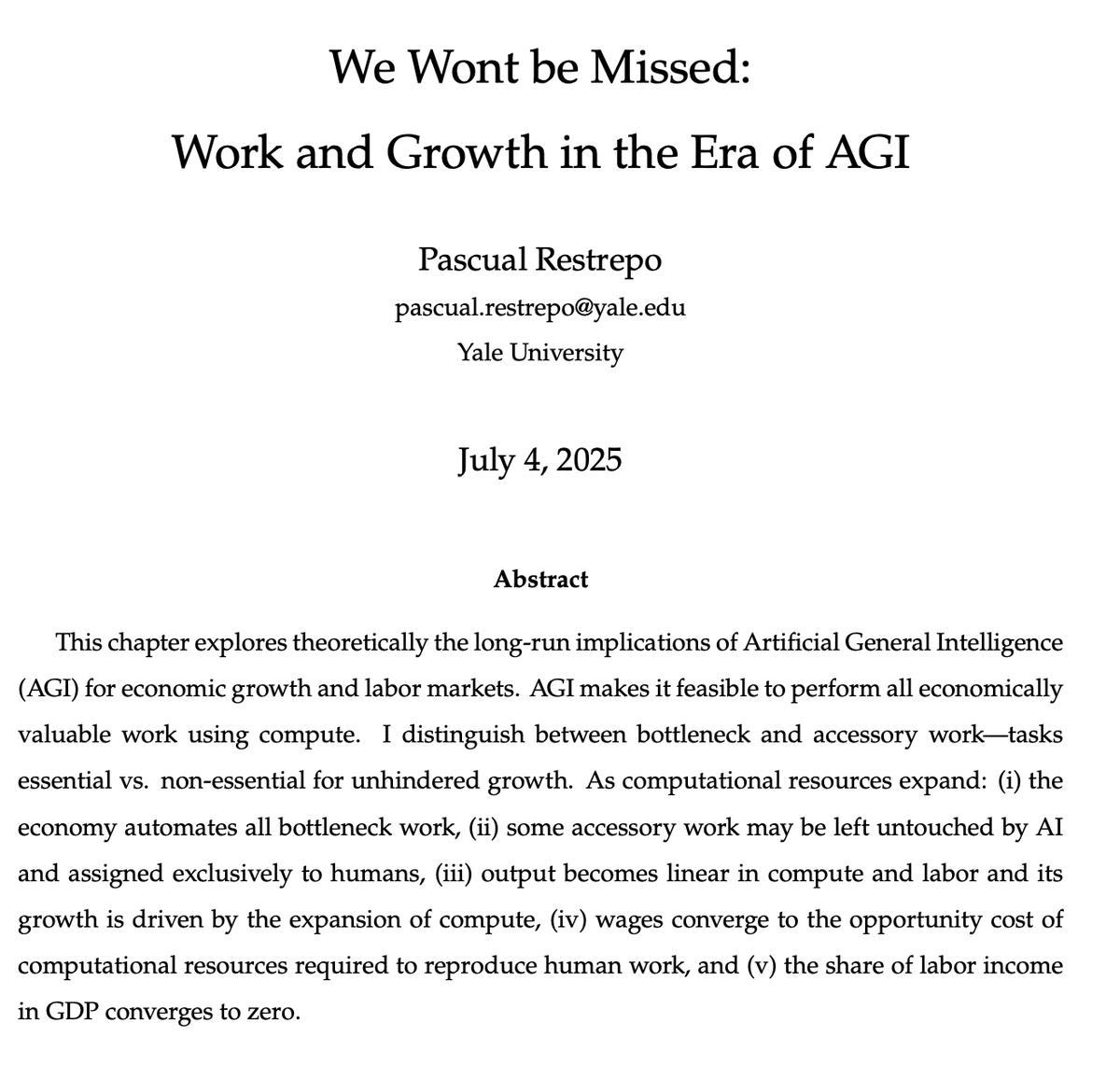
My rebuttal...
Dec 11
Read 21 tweets
The new Titans architecture shows how badly Google wants to go back to recurrence.
Why? Recurrence is damn cheap.
This paper shows how the brain does it.
Striatum, working with cortex, HPC, BG, and thalamus, in recurrent loops and shortcuts.
Here is my toy model and notes:
Why? Recurrence is damn cheap.
This paper shows how the brain does it.
Striatum, working with cortex, HPC, BG, and thalamus, in recurrent loops and shortcuts.
Here is my toy model and notes:
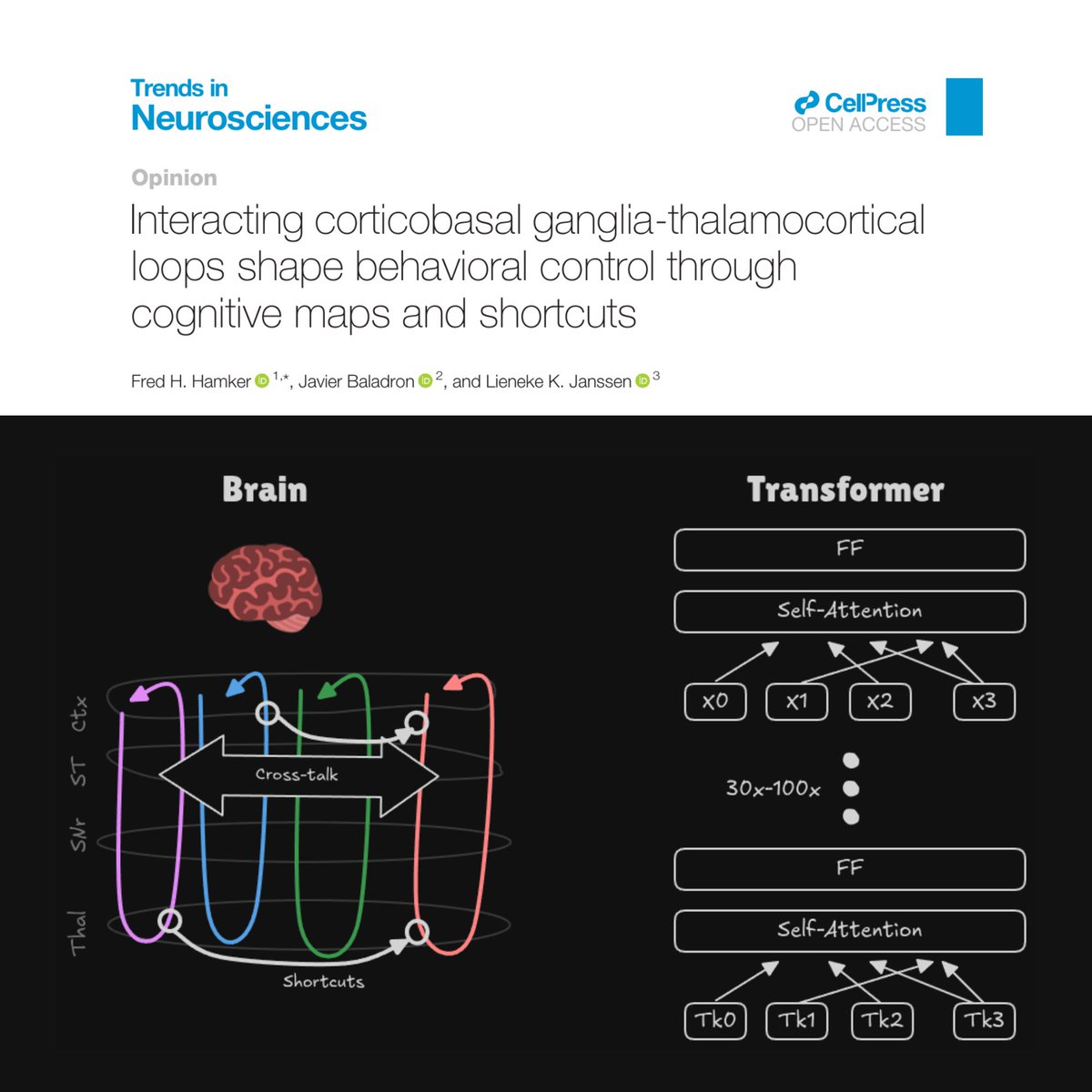
This paper proposes a new way to see the brain's core architecture and compares it to transformers.
The canonical view suggests goal-directed and habitual systems are separate and compete for control.
The canonical view suggests goal-directed and habitual systems are separate and compete for control.
This is the classic and often abused dual view of the brain:
System I (habits+skills/fast)
System II (complex decisions/slow)
This review argues this view is wrong, and behaviors are actually one integrated continuous network of interacting loops.
System I (habits+skills/fast)
System II (complex decisions/slow)
This review argues this view is wrong, and behaviors are actually one integrated continuous network of interacting loops.
Dec 11
Read 14 tweets
🧵EIGHT new articles in Journal of Genocide Research pushing the Gaza genocide hoax—nothing new, all repetition. Distorted quotes to invent intent, fake stats, and endless “Zionism is genocide.” They cite each other in a closed loop that mimics scholarship but is not. Review: 1/ 
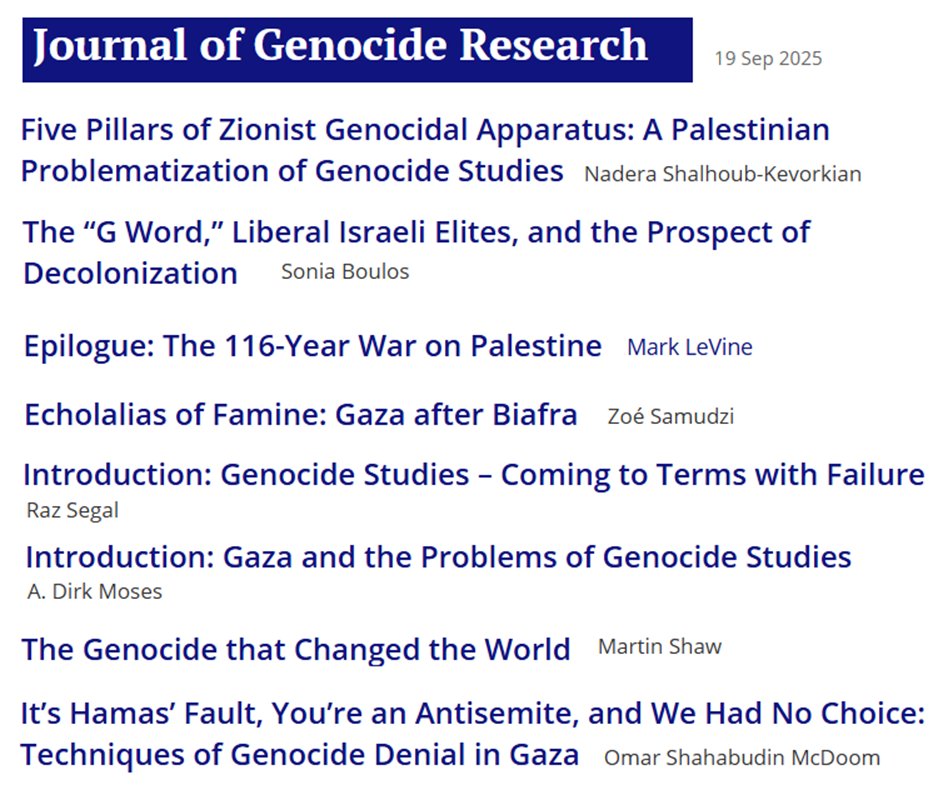
Dec 11
Read 4 tweets
🚨BREAKING: While at McDonald's, Altoona Police supervisor used his phone to google Pennsylvania laws to figure out what they could arrest Luigi Mangione for.
One charge he decided upon was False Identification to Police (§4914) - a law Luigi did not break.

One charge he decided upon was False Identification to Police (§4914) - a law Luigi did not break.
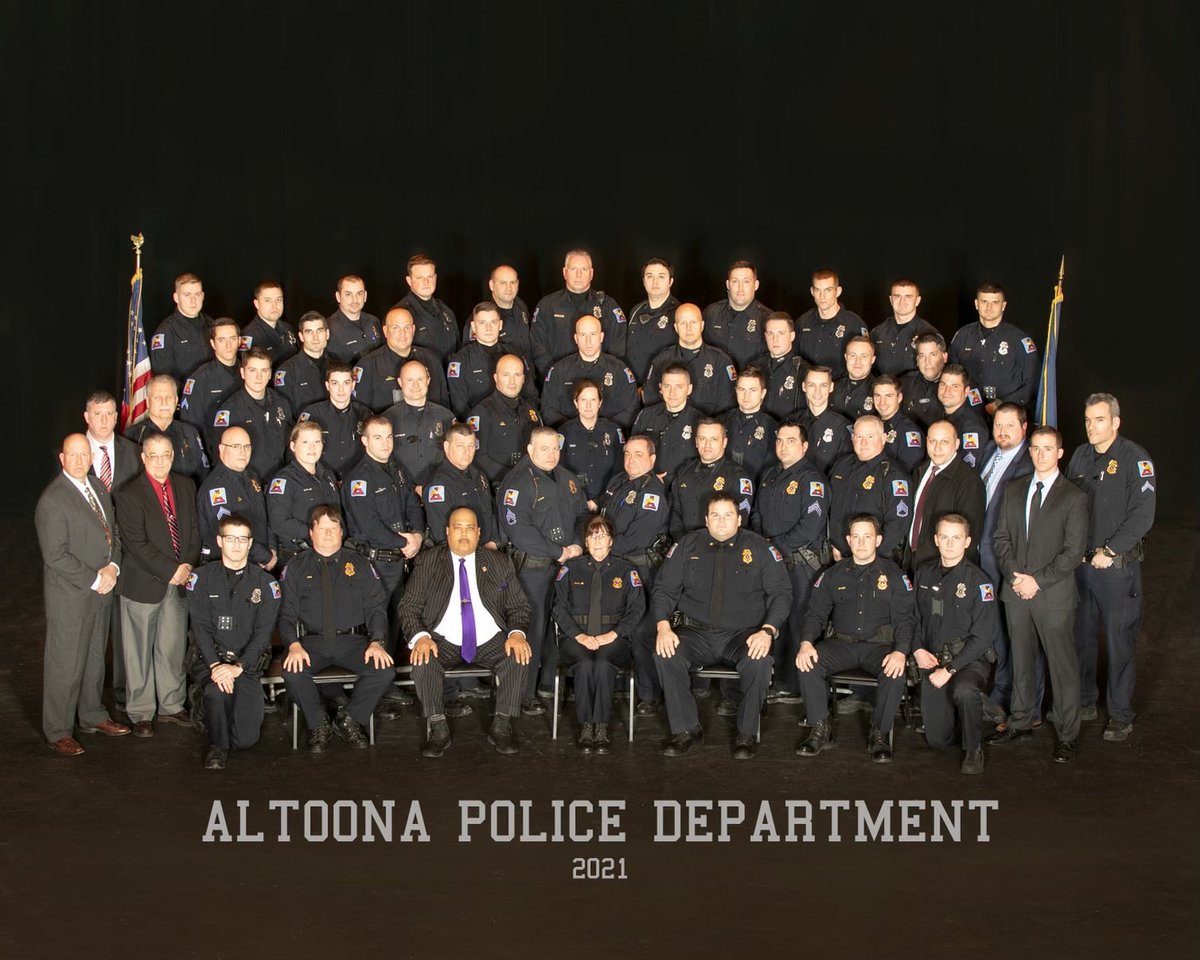
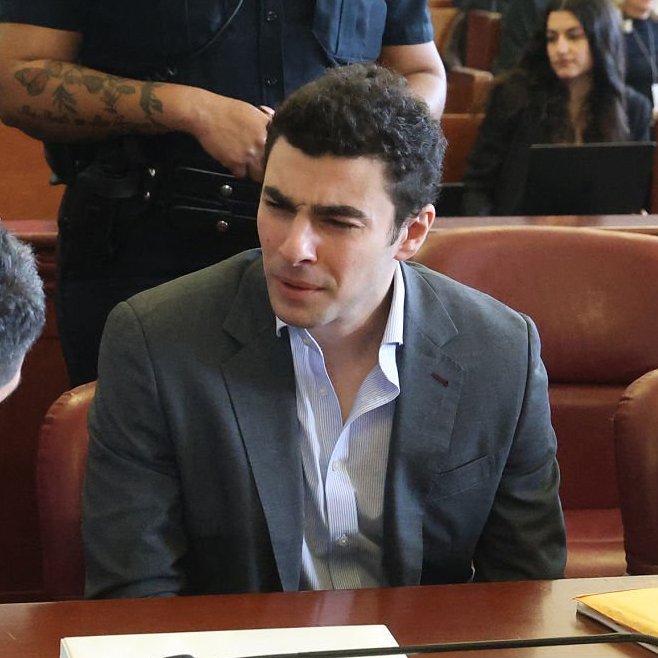
Why Luigi didn't break this law? It's NOT illegal to falsely identify yourself to police in Pennsylvania UNLESS they told you that you were under official investigation.Luigi identified himself correctly after being told that-so no law was broken.Yet,APD still arrested him for it 

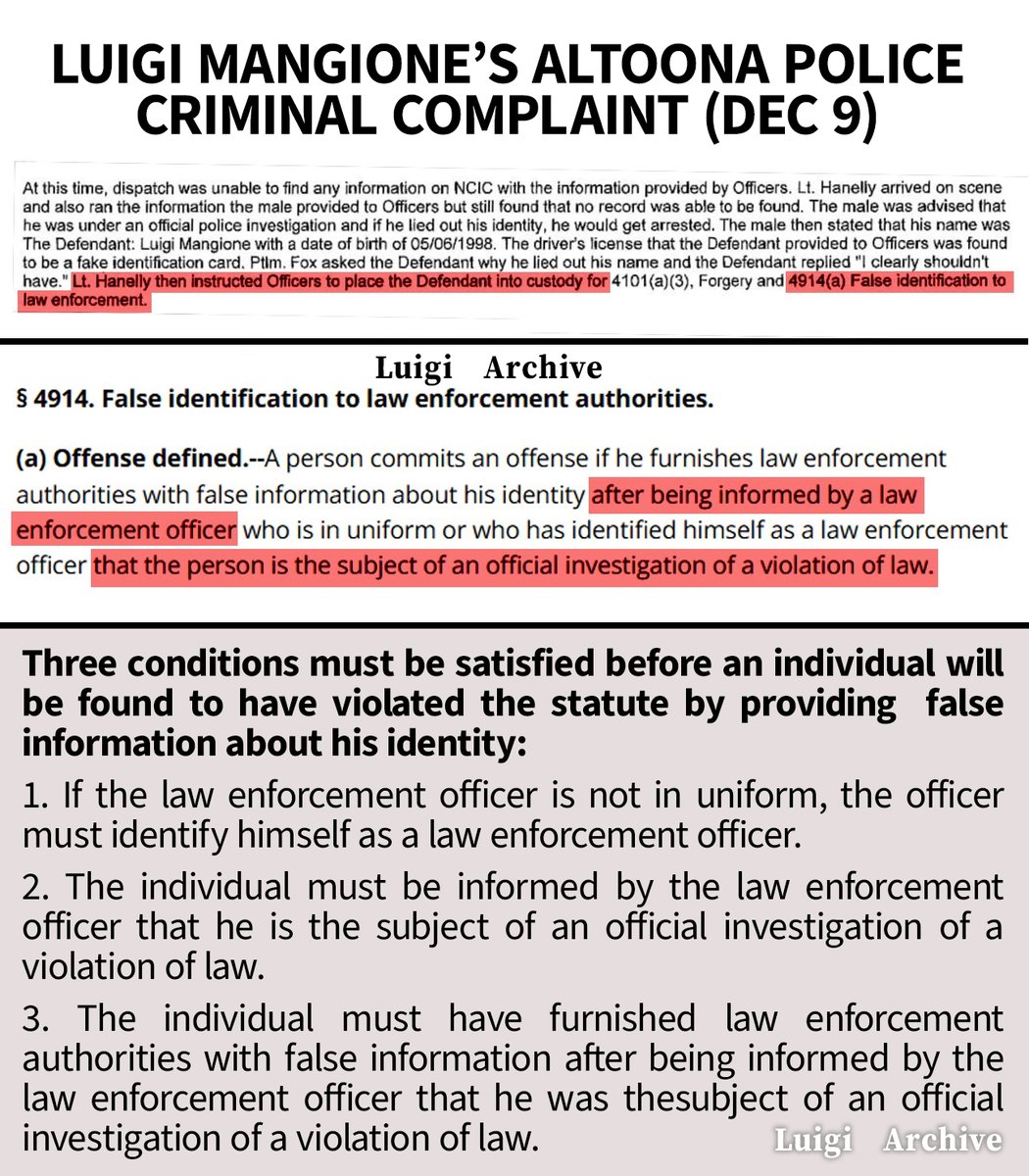
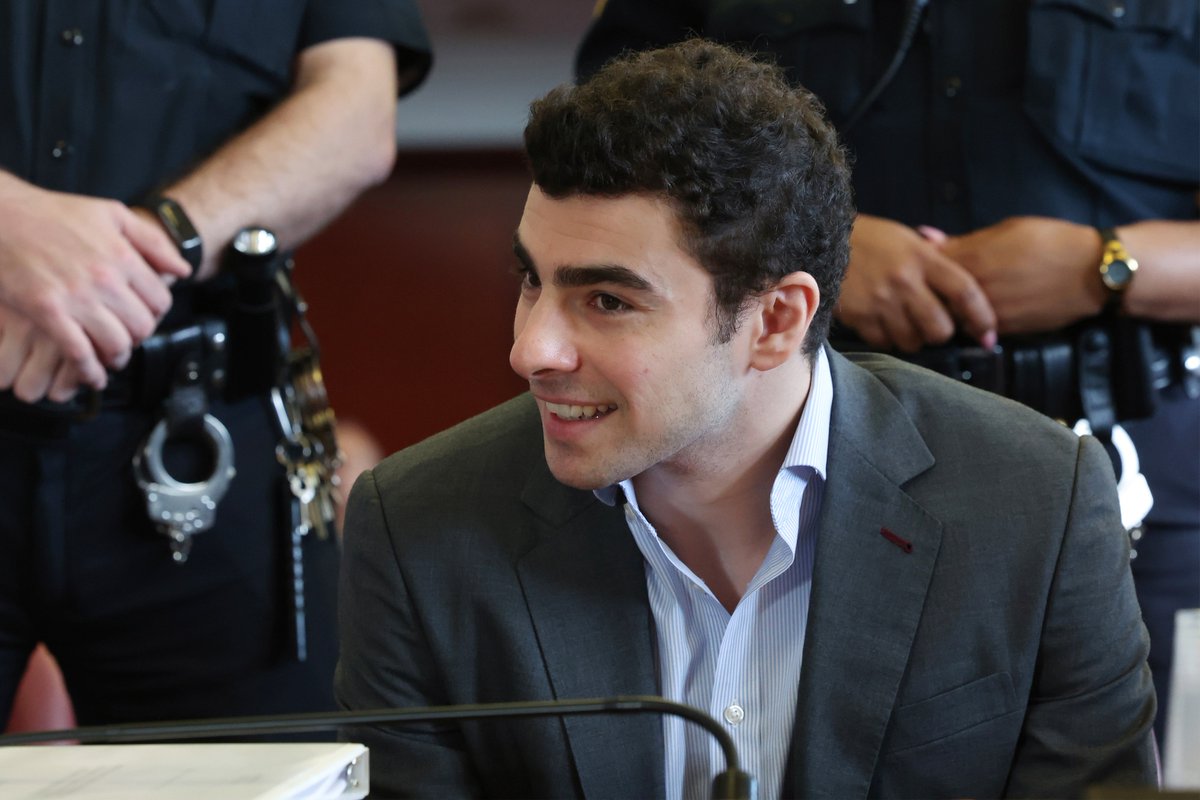
Also, don't forget to donate to his legal fund & follow for more updates! MSM only repeats prosecution's narrative & Social Media platforms heavily cens*r Luigi content (our 3 accs were susp**ded!).For justice to prevail, we all must keep paying attention! givesendgo.com/luigi-defense-…
Dec 11
Read 19 tweets
VANCE'S SHADOW WAR
Call it what you want - the Republican Civil War, the Neocon Gambit, or, as @_jburden and @NormanDodd_knew, deem it, the GOP Samson Option, there's obviously a struggle for future control of the Right on in full force.
Call it what you want - the Republican Civil War, the Neocon Gambit, or, as @_jburden and @NormanDodd_knew, deem it, the GOP Samson Option, there's obviously a struggle for future control of the Right on in full force.
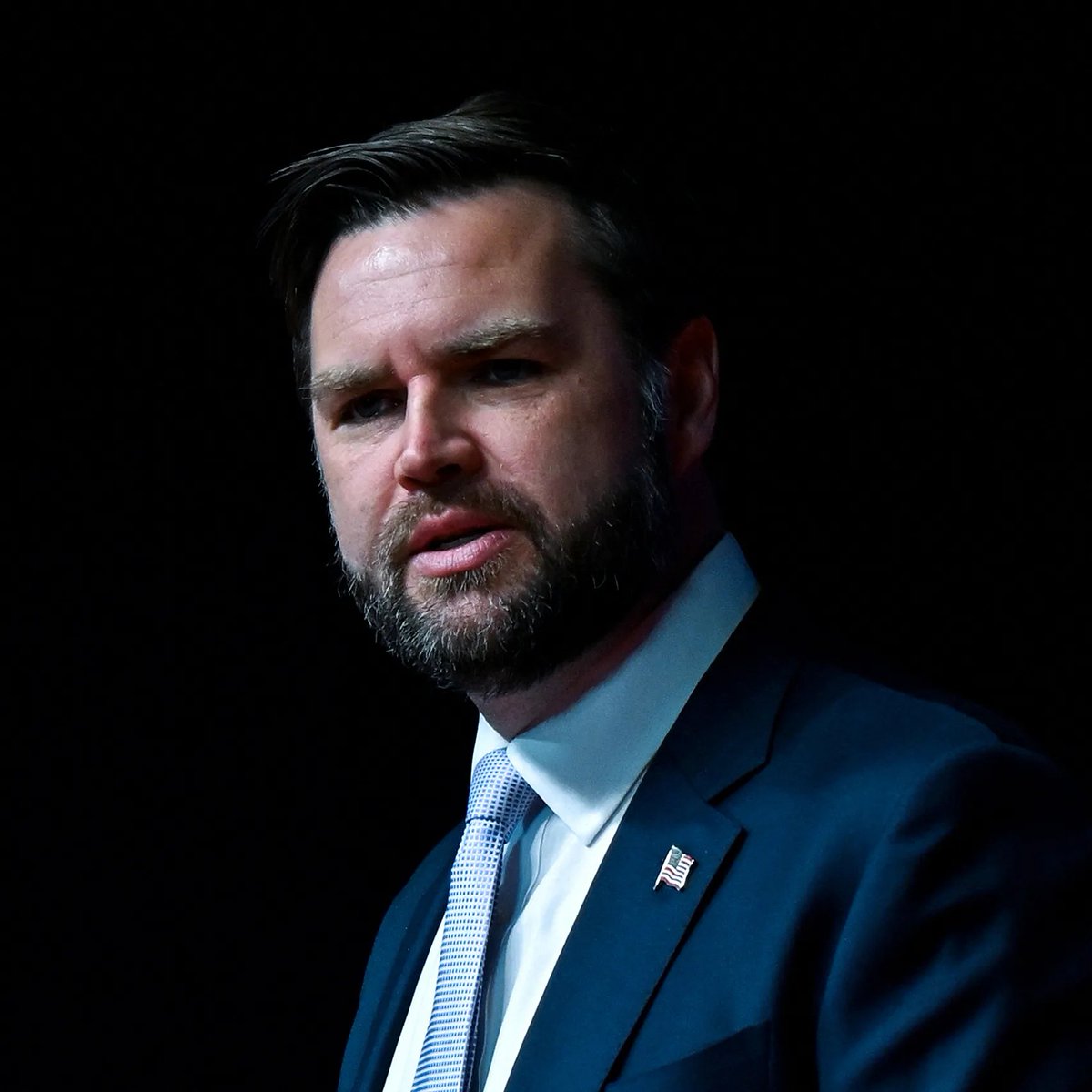
Dec 11
Read 7 tweets
When Alex Nowrasteh of the Cato Institute asserts that I'm "confused" about jargon in the trust literature, is he correct?
Of course not. Bayesians, update accordingly.
New post at Heterodox STEM, generously hosted by @DorianAbbot, Uslaner and Keefer cameos.
Short🧵:
Of course not. Bayesians, update accordingly.
New post at Heterodox STEM, generously hosted by @DorianAbbot, Uslaner and Keefer cameos.
Short🧵:
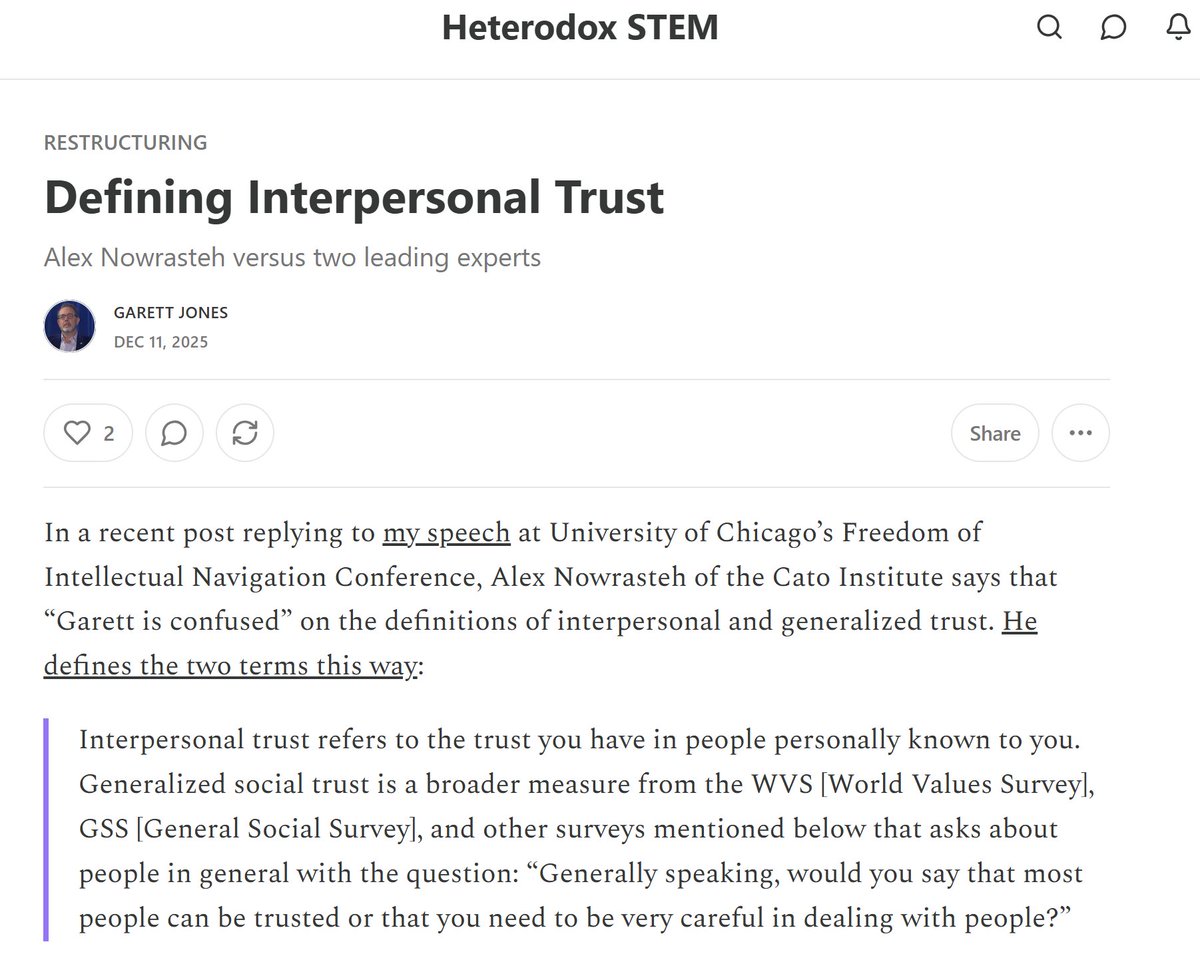
In a new response to my Heterodox STEM post, Nowrasteh says "Garett cites older papers that used inconsistent terminology."
But Keefer, a founder of trust+growth regressions, uses interpersonal trust as a synonym for generalized trust in 2022 and 2025.



But Keefer, a founder of trust+growth regressions, uses interpersonal trust as a synonym for generalized trust in 2022 and 2025.
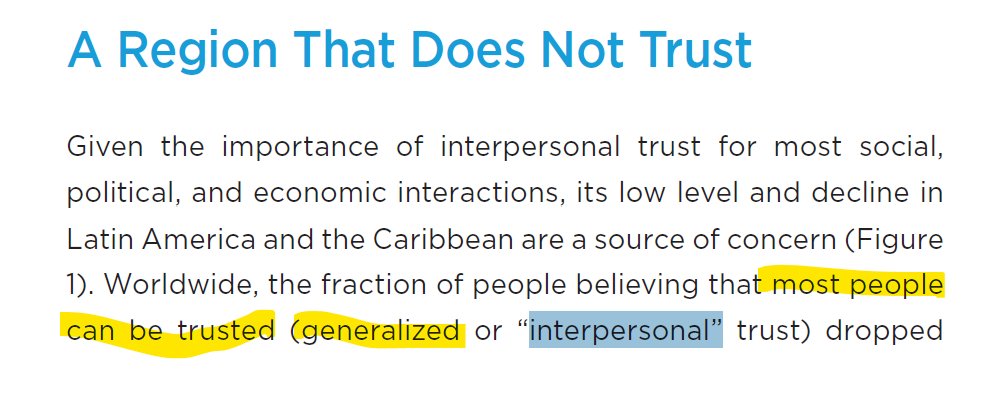
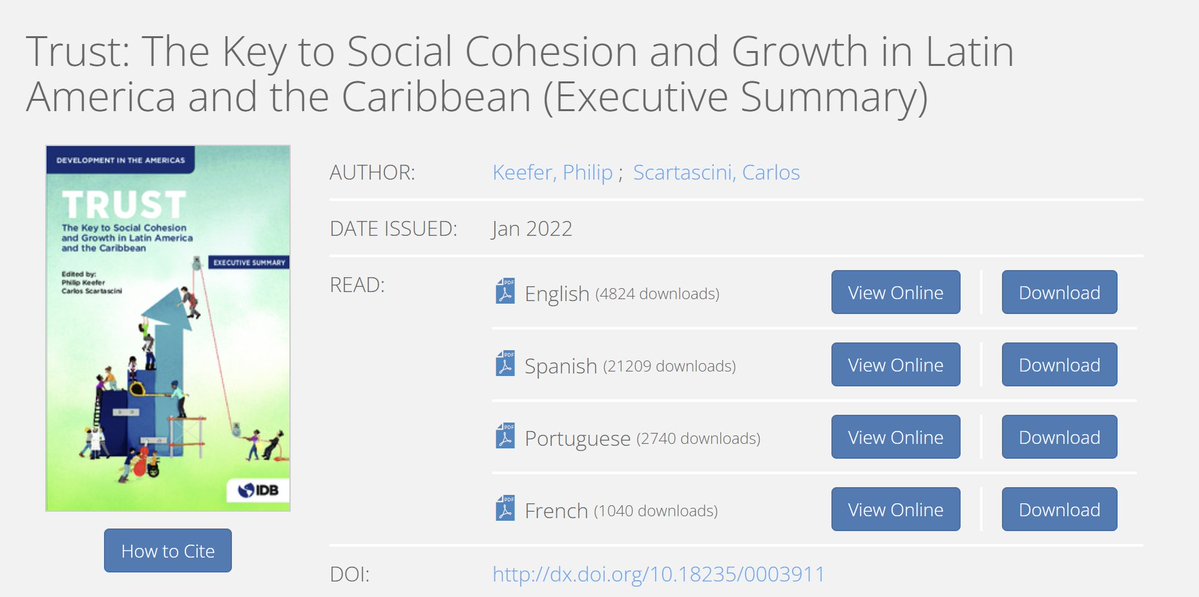


I like being ecumenical about definitions whenever possible. Academic jargon varies by field, even subfield.
Just look at how macroeconomists and finance experts use the same word: Investment.
But when someone claims I'm "confused," it's valuable to respond.
Just look at how macroeconomists and finance experts use the same word: Investment.
But when someone claims I'm "confused," it's valuable to respond.
Dec 11
Read 6 tweets
Πριν χρόνια δούλευα σε χιονοδρομικό της Β Ελλάδας.
Ήταν η χρονιά που είχαμε πάρει μια μεγάλη απόφαση: εκτός από τους pisteurs και τις Α’ βοήθειες, όλο το προσωπικό θα μάθαινε κ θα πιστοποιούνταν σε τεχνικές έρευνας διάσωσης.
Κ τελικά, αυτό το σεμινάριο ήταν που μας έσωσε
🧶⬇️
Ήταν η χρονιά που είχαμε πάρει μια μεγάλη απόφαση: εκτός από τους pisteurs και τις Α’ βοήθειες, όλο το προσωπικό θα μάθαινε κ θα πιστοποιούνταν σε τεχνικές έρευνας διάσωσης.
Κ τελικά, αυτό το σεμινάριο ήταν που μας έσωσε
🧶⬇️
Δουλεύαμε κάθε ΠΣΚ.
Εκείνη η Παρασκευή ήρθε μετά από δυνατή χιονοθύελλα.
Το βουνό ήταν παγωμένο παντού
Δεν γινόταν να ανοίξουμε για το κοινό, έπρεπε πρώτα να κάνουμε τις πιο επικίνδυνες εργασίες: να χτυπήσουμε τα συρματόσχοινα και τα ράουλα των πυλώνων ώστε να πέσει ο πάγος
⬇️
Εκείνη η Παρασκευή ήρθε μετά από δυνατή χιονοθύελλα.
Το βουνό ήταν παγωμένο παντού
Δεν γινόταν να ανοίξουμε για το κοινό, έπρεπε πρώτα να κάνουμε τις πιο επικίνδυνες εργασίες: να χτυπήσουμε τα συρματόσχοινα και τα ράουλα των πυλώνων ώστε να πέσει ο πάγος
⬇️
Αν δεν το κάναμε, υπήρχε κίνδυνος εκτροχιασμού των καρεκλών.
Και κάπως έτσι, βρέθηκα στην κορυφή ενός πυλώνα, να χάνω την ισορροπία μου.
Έφυγα προς τα πίσω, χτύπησα με την πλάτη στο παγωμένο χιόνι και άρχισα να γλιστράω στην πλαγιά - περίπου 200 μέτρα.
⬇️
Και κάπως έτσι, βρέθηκα στην κορυφή ενός πυλώνα, να χάνω την ισορροπία μου.
Έφυγα προς τα πίσω, χτύπησα με την πλάτη στο παγωμένο χιόνι και άρχισα να γλιστράω στην πλαγιά - περίπου 200 μέτρα.
⬇️
Dec 11
Read 15 tweets
General Syrskyi on the transformation of modern warfare:
We are witnessing a rapid and fundamental shift in the very paradigm of warfare. 1/15
We are witnessing a rapid and fundamental shift in the very paradigm of warfare. 1/15

At the beginning of the full-scale invasion, combat was conducted in a largely traditional manner: battalion tactical groups, armored columns, and large concentrations of infantry. Today, the battlefield has been transformed by the mass introduction of drones of every type. 2/15
It is now impossible to imagine warfare without drones, or to imagine commanders and headquarters making decisions without accounting for them. Countering drones, destroying enemy drones and their launch sites, has become the number-one task for any commander. 3/15
Dec 11
Read 5 tweets
So lots of people are watching the increasingly bizarre things happening in the US & wondering what is going on? Have they all lost their minds? No. They have not & this is far more chilling than that. What they are doing is called epistemic destabilization & it's a core
feature of how totalitarian regimes maintain control. It's highly effective & has been used to keep populations under boot for decades successfully. It keeps people from knowing what’s real, what’s important, and what’s actually happening. When people can’t tell real
problems from invented ones, they become passive, confused, compliant, and easy to manipulate. Hannah Arendt talks about this quite a bit in the origins of totalitarianism.
Dec 11
Read 3 tweets
Number of Bills passed by Congress in a President’s 1st year in office:
H.W. Bush (242 in 1989)
Clinton (209 in 1993)
W. Bush (109 in 2001)
Obama (120 in 2009)
President Trump (96 in 2017)
Autopen Biden (122 in 2021)
This year… 5
Congress is Stonewalling you and us @POTUS
H.W. Bush (242 in 1989)
Clinton (209 in 1993)
W. Bush (109 in 2001)
Obama (120 in 2009)
President Trump (96 in 2017)
Autopen Biden (122 in 2021)
This year… 5
Congress is Stonewalling you and us @POTUS
Only President William Henry Harrison, who died shortly after taking office after just 31 days, is the only President to sign fewer than President Trump in his First Year
*Correction, the total for 2025 is 47, not 5, including CR’s and JR’s
47 is still the worst in the modern era and ranks 5th worst total ever:
John Adams (16 in 1797)
James Buchanan (32 in 1857) Washington’s 1/2 year (23 in 1789)
Harrison (0 in 1841)
5 was the First 100 days
47 is still the worst in the modern era and ranks 5th worst total ever:
John Adams (16 in 1797)
James Buchanan (32 in 1857) Washington’s 1/2 year (23 in 1789)
Harrison (0 in 1841)
5 was the First 100 days
Dec 11
Read 4 tweets
1/3. A good day for antitrust. The Ninth Circuit mostly upheld the injunction against Apple for screwing app developers in the lawsuit vs Epic Games. Apple can charge, but only for its actual costs. fingfx.thomsonreuters.com/gfx/legaldocs/…
2/3. Texas Attorney General Ken Paxton sued medical health care records monopolist Epic Systems. texasattorneygeneral.gov/sites/default/…
3. Senator Blumenthal asked for an update on the FTC's dialysis investigation. blumenthal.senate.gov/imo/media/doc/…
Dec 12
Read 17 tweets
🧵The Republic Failure Pattern: Observed across every collapsed republic in history
This is not ideology or opinion. Every republic-to-empire transition in recorded history follows the same structural breakdown.
Different cultures. Similar sequence.
If you study Rome, Athens, Venice, France, Weimar Germany, the British Empire—the pattern does not change.👇
This is not ideology or opinion. Every republic-to-empire transition in recorded history follows the same structural breakdown.
Different cultures. Similar sequence.
If you study Rome, Athens, Venice, France, Weimar Germany, the British Empire—the pattern does not change.👇

1/ Loss of a shared civic definition
The population can no longer agree on:
• what citizenship means
• who the state exists for
• what obligations accompany rights
Once identity fractures, law becomes contested.
Example: In the late Roman Republic, citizenship expanded rapidly without a shared civic ethic, turning Roman identity from duty-bound membership into a contested political instrument.
The population can no longer agree on:
• what citizenship means
• who the state exists for
• what obligations accompany rights
Once identity fractures, law becomes contested.
Example: In the late Roman Republic, citizenship expanded rapidly without a shared civic ethic, turning Roman identity from duty-bound membership into a contested political instrument.
2/ Law shifts from principle to instrument
Legal mechanisms remain intact, but:
• enforcement becomes selective
• process substitutes for justice
• outcomes are justified procedurally, not morally
This precedes legitimacy collapse.
Example: During the late Roman Republic, emergency laws and prosecutions were selectively applied through proscriptions, reducing law from a neutral standard to a factional weapon.
Legal mechanisms remain intact, but:
• enforcement becomes selective
• process substitutes for justice
• outcomes are justified procedurally, not morally
This precedes legitimacy collapse.
Example: During the late Roman Republic, emergency laws and prosecutions were selectively applied through proscriptions, reducing law from a neutral standard to a factional weapon.
Dec 12
Read 2 tweets
FACT: Rosie Rios is not a symbolic appointment - she represents the center of U.S. monetary authority
Rosie Rios is not a politician.
She is not a lobbyist.
She is not a “crypto personality.”
She is the former 43rd Treasurer of the United States, whose literal signature is on over $1.7 trillion of circulating U.S. currency during her tenure.
Her domain of authority included:
• Bureau of Engraving and Printing
• U.S. Mint
• Fort Knox
• Oversight of nationwide currency supply, issuance & coinage policy
• Deep involvement in economic revitalization programs
• National reserve & liquidity frameworks
When someone with this authority joins the board of Ripple, it signals:
@Ripple (and XRP) are operating inside the realm of U.S. sovereign monetary legitimacy - not outside it.
This is an unmistakable signal about where the future infrastructure is going.
FACT: @America250 is a bipartisan, Congressionally chartered commission for national continuity & economic renewal
Rosie Rios serves as Chair of America 250, which is not a PR body -
it’s a federal commission chartered by Congress to coordinate:
• America’s 250th anniversary
• National communications
• Economic stewardship themes
• Cultural and civic strategic messaging
• The modernization narrative of America’s next chapter
This is where her influence matters:
If blockchain, tokenization & financial modernization are part of the next chapter of American competitiveness, America 250 is where the messaging alignment is shaped.
And sitting inside that commission is the former U.S. Treasurer who now sits on Ripple’s board.
Ripple is not “a crypto company.”
Ripple is positioned as the infrastructure partner for the United States’ next monetary system upgrade.
FACT: The U.S. Treasury already recognizes the role of digital assets in reserve frameworks
The Treasury and the Federal Reserve have already stated officially:
• Digital assets may be included in reserve or collateral frameworks where state or federal regulation is satisfied.
• Tokenized forms of U.S. Treasuries are explicitly recognized under pilot programs, including @The_DTCC tokenization framework.
• Stablecoins under @NYDFS supervision meet the criteria for:
• Full-dollar backing
• Regulated custody
• Liquidity transparency
• Supervisory reporting obligations
This matters because RLUSD is a New York–regulated stablecoin, meaning:
It is one of a very small number of U.S.-legal, U.S.-compliant, institution-grade stablecoins suitable for integration with federal systems.
@RosieRios understands this regulatory environment intimately.
Ripple is building within it - not outside it.
FACT: RLUSD is not just “a stablecoin” - it is a regulatory-grade payment instrument
NYDFS requires:
• 1:1 USD backing
• High-quality liquid assets
• Approved custodians
• Monthly attestations
• Segregated reserves
• Strict redemption rights
• Anti-fraud compliance
• Consumer-protection standards
• Real-time transactional monitoring
• Transactional finality and auditability
It also requires rigorous interoperability and traceability - features built directly into XRPL’s design.
The XRPL is one of the few ledgers capable of supporting:
• Issued assets
• Stablecoins
• Native DEX function
• Regulatory-compliant pathways
• Atomic settlement
• Predictable transaction fees
• No MEV, no Miner Extractable Value
• Deterministic finality
This is why RLUSD + XRPL is not a coincidence.
It is regulatory and architectural compatibility.
FACT: New York DFS frameworks require pairing the stablecoin with a compliant settlement system
NYDFS rules for institutional stablecoins require:
• A deterministic settlement ledger
• No probabilistic finality
• A predictable fee structure
• Identity-compliant rails
• Operational rigor under high institutional throughput
Ethereum fails on multiple criteria.
Solana fails on institutional reliability.
Most chains fail outright.
XRPL passes.
.. 2/2 cont’d
Rosie Rios is not a politician.
She is not a lobbyist.
She is not a “crypto personality.”
She is the former 43rd Treasurer of the United States, whose literal signature is on over $1.7 trillion of circulating U.S. currency during her tenure.
Her domain of authority included:
• Bureau of Engraving and Printing
• U.S. Mint
• Fort Knox
• Oversight of nationwide currency supply, issuance & coinage policy
• Deep involvement in economic revitalization programs
• National reserve & liquidity frameworks
When someone with this authority joins the board of Ripple, it signals:
@Ripple (and XRP) are operating inside the realm of U.S. sovereign monetary legitimacy - not outside it.
This is an unmistakable signal about where the future infrastructure is going.
FACT: @America250 is a bipartisan, Congressionally chartered commission for national continuity & economic renewal
Rosie Rios serves as Chair of America 250, which is not a PR body -
it’s a federal commission chartered by Congress to coordinate:
• America’s 250th anniversary
• National communications
• Economic stewardship themes
• Cultural and civic strategic messaging
• The modernization narrative of America’s next chapter
This is where her influence matters:
If blockchain, tokenization & financial modernization are part of the next chapter of American competitiveness, America 250 is where the messaging alignment is shaped.
And sitting inside that commission is the former U.S. Treasurer who now sits on Ripple’s board.
Ripple is not “a crypto company.”
Ripple is positioned as the infrastructure partner for the United States’ next monetary system upgrade.
FACT: The U.S. Treasury already recognizes the role of digital assets in reserve frameworks
The Treasury and the Federal Reserve have already stated officially:
• Digital assets may be included in reserve or collateral frameworks where state or federal regulation is satisfied.
• Tokenized forms of U.S. Treasuries are explicitly recognized under pilot programs, including @The_DTCC tokenization framework.
• Stablecoins under @NYDFS supervision meet the criteria for:
• Full-dollar backing
• Regulated custody
• Liquidity transparency
• Supervisory reporting obligations
This matters because RLUSD is a New York–regulated stablecoin, meaning:
It is one of a very small number of U.S.-legal, U.S.-compliant, institution-grade stablecoins suitable for integration with federal systems.
@RosieRios understands this regulatory environment intimately.
Ripple is building within it - not outside it.
FACT: RLUSD is not just “a stablecoin” - it is a regulatory-grade payment instrument
NYDFS requires:
• 1:1 USD backing
• High-quality liquid assets
• Approved custodians
• Monthly attestations
• Segregated reserves
• Strict redemption rights
• Anti-fraud compliance
• Consumer-protection standards
• Real-time transactional monitoring
• Transactional finality and auditability
It also requires rigorous interoperability and traceability - features built directly into XRPL’s design.
The XRPL is one of the few ledgers capable of supporting:
• Issued assets
• Stablecoins
• Native DEX function
• Regulatory-compliant pathways
• Atomic settlement
• Predictable transaction fees
• No MEV, no Miner Extractable Value
• Deterministic finality
This is why RLUSD + XRPL is not a coincidence.
It is regulatory and architectural compatibility.
FACT: New York DFS frameworks require pairing the stablecoin with a compliant settlement system
NYDFS rules for institutional stablecoins require:
• A deterministic settlement ledger
• No probabilistic finality
• A predictable fee structure
• Identity-compliant rails
• Operational rigor under high institutional throughput
Ethereum fails on multiple criteria.
Solana fails on institutional reliability.
Most chains fail outright.
XRPL passes.
.. 2/2 cont’d

Thus:
RLUSD’s pairing with XRPL is a regulatory-compliance decision, not a marketing decision.
Which leads us to this central point:
LOGICAL INFERENCE: If RLUSD is the regulated cash leg, XRP is the natural liquidity leg.
Here is the heart of the matter:
NYDFS regulates the dollar leg through RLUSD.
The liquidity leg must be:
• Fast
• Deterministic
• Non-custodial
• Trust-minimized
• Global
• Compliant
• Stable in function
• Available 24/7
• Interoperable with ISO 20022 flows
• Tied into a ledger capable of regulated RWA tokenization
The only digital asset that matches this list natively, without bolt-ons or workarounds, is:
XRP.
Thus one of the most powerful truths:
RLUSD is the regulated dollar.
XRP is the regulated liquidity.
This is the architecture of a global settlement system.
LOGICAL INFERENCE: Treasury supervision + Ripple board ties = legitimacy for XRP in reserve or liquidity frameworks.
Rosie Rios has explicitly said:
“XRP is the key to cross-border liquidity.”
That is a former U.S. Treasury Secretary speaking in her own capacity.
If tokenized Treasuries, stablecoins, and reserve-backed digital payments rails form the cash layer of the new U.S. financial system, then:
XRP becomes the neutral, non-sovereign, liquidity-optimizing, bridge asset that allows these tokenized reserves to move.
This is not speculation.
This is design logic.
And the presence of:
• Michael Bodson (DTCC)
• Rosie Rios (U.S. Treasury)
• Former regulators in multiple jurisdictions
• Institutional banking partners
• ISO 20022 compliance
• RLUSD + XRPL compatibility
• DTCC announcing tokenized securities across approved blockchains
• Ripple’s increasingly visible role in U.S. monetary modernization
all point toward a unified liquidity system.
In that system…
RLUSD = compliant cash
XRP = compliant liquidity
XRPL = compliant settlement ledger
DTCC = compliant asset-issuance and custody stack
This is the architecture of a global digital reserve ecosystem.
TRAJECTORY: The convergence is not hypothetical. It is happening.
Let’s connect the dots:
A former DTCC CEO joins Ripple.
DTCC begins tokenizing securities.
A former U.S. Treasury Secretary joins Ripple
Treasury formally acknowledges digital assets within reserve and collateral frameworks.
Ripple launches RLUSD under NYDFS
DTCC’s tokenization model requires compliant cash rails.
RLUSD lives on XRPL
XRP is the native bridge asset for settlement and liquidity.
U.S. financial modernization accelerates toward ISO 20022 + blockchain
XRPL is one of the few ledgers architected for this model.
America 250 shapes the narrative of America’s economic future
Rosie Rios is the Chair shaping that narrative.
In the language of common sense:
No nation assigns its former head of currency issuance and its former head of securities settlement to the same company by accident.
Systems are merging.
Roles are aligning.
The architecture is being revealed.
ONE SENTENCE SUMMARY
Rosie Rios’s Treasury authority, her leadership of America 250, her seat on Ripple’s board, the regulatory framework around RLUSD, and the architecture of the XRPL together indicate that Ripple is not merely participating in the future of U.S. financial infrastructure - it is being positioned as one of the foundational rails of that system, where RLUSD is the compliant dollar and XRP is the compliant global liquidity instrument.
RLUSD’s pairing with XRPL is a regulatory-compliance decision, not a marketing decision.
Which leads us to this central point:
LOGICAL INFERENCE: If RLUSD is the regulated cash leg, XRP is the natural liquidity leg.
Here is the heart of the matter:
NYDFS regulates the dollar leg through RLUSD.
The liquidity leg must be:
• Fast
• Deterministic
• Non-custodial
• Trust-minimized
• Global
• Compliant
• Stable in function
• Available 24/7
• Interoperable with ISO 20022 flows
• Tied into a ledger capable of regulated RWA tokenization
The only digital asset that matches this list natively, without bolt-ons or workarounds, is:
XRP.
Thus one of the most powerful truths:
RLUSD is the regulated dollar.
XRP is the regulated liquidity.
This is the architecture of a global settlement system.
LOGICAL INFERENCE: Treasury supervision + Ripple board ties = legitimacy for XRP in reserve or liquidity frameworks.
Rosie Rios has explicitly said:
“XRP is the key to cross-border liquidity.”
That is a former U.S. Treasury Secretary speaking in her own capacity.
If tokenized Treasuries, stablecoins, and reserve-backed digital payments rails form the cash layer of the new U.S. financial system, then:
XRP becomes the neutral, non-sovereign, liquidity-optimizing, bridge asset that allows these tokenized reserves to move.
This is not speculation.
This is design logic.
And the presence of:
• Michael Bodson (DTCC)
• Rosie Rios (U.S. Treasury)
• Former regulators in multiple jurisdictions
• Institutional banking partners
• ISO 20022 compliance
• RLUSD + XRPL compatibility
• DTCC announcing tokenized securities across approved blockchains
• Ripple’s increasingly visible role in U.S. monetary modernization
all point toward a unified liquidity system.
In that system…
RLUSD = compliant cash
XRP = compliant liquidity
XRPL = compliant settlement ledger
DTCC = compliant asset-issuance and custody stack
This is the architecture of a global digital reserve ecosystem.
TRAJECTORY: The convergence is not hypothetical. It is happening.
Let’s connect the dots:
A former DTCC CEO joins Ripple.
DTCC begins tokenizing securities.
A former U.S. Treasury Secretary joins Ripple
Treasury formally acknowledges digital assets within reserve and collateral frameworks.
Ripple launches RLUSD under NYDFS
DTCC’s tokenization model requires compliant cash rails.
RLUSD lives on XRPL
XRP is the native bridge asset for settlement and liquidity.
U.S. financial modernization accelerates toward ISO 20022 + blockchain
XRPL is one of the few ledgers architected for this model.
America 250 shapes the narrative of America’s economic future
Rosie Rios is the Chair shaping that narrative.
In the language of common sense:
No nation assigns its former head of currency issuance and its former head of securities settlement to the same company by accident.
Systems are merging.
Roles are aligning.
The architecture is being revealed.
ONE SENTENCE SUMMARY
Rosie Rios’s Treasury authority, her leadership of America 250, her seat on Ripple’s board, the regulatory framework around RLUSD, and the architecture of the XRPL together indicate that Ripple is not merely participating in the future of U.S. financial infrastructure - it is being positioned as one of the foundational rails of that system, where RLUSD is the compliant dollar and XRP is the compliant global liquidity instrument.

Dec 12
Read 2 tweets
”I call upon all who have marrow in their bones and blood in their veins. Train yourselves, Become men!
We need hardness, we need a courageous skepticism. Thoughts and schemes are nothing without power.”
—Oswald Spengler, Prussianism and Socialism
We need hardness, we need a courageous skepticism. Thoughts and schemes are nothing without power.”
—Oswald Spengler, Prussianism and Socialism
Reply # 1: On “Courageous skepticism”




